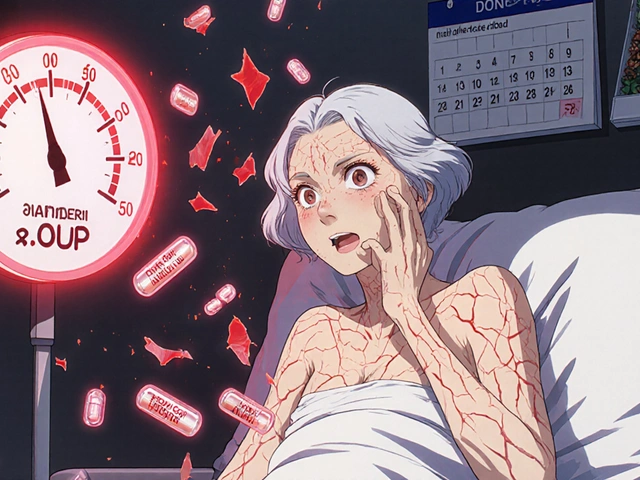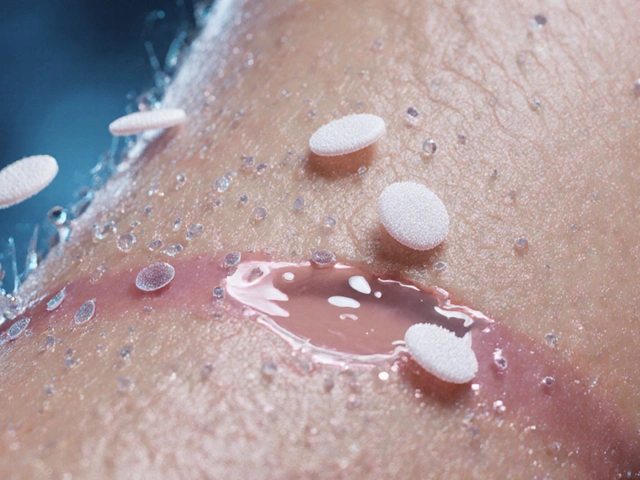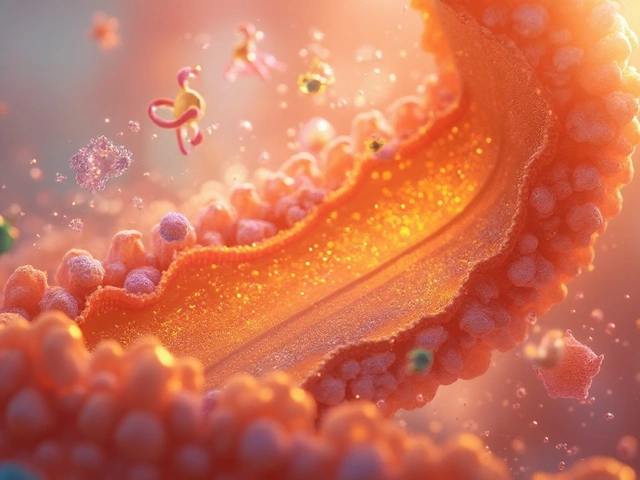
Health October 21, 2025
Why Hiccups Make Us Laugh: The Science Behind the Amusement
When a sudden hiccup occurs, it’s an involuntary contraction of the diaphragm followed by a quick closure of the vocal cords. The abrupt sound and the helpless feeling often turn a simple physiological glitch into a source of giggles.
What Actually Triggers a Hiccup?
The hiccup reflex starts in the brainstem, specifically the medullary reticular formation. A signal travels down the vagus nerve and the phrenic nerve, causing the diaphragm to spasm. The rapid closure of the glottis creates the classic “hic!” sound.
- Common irritants: carbonated drinks, sudden temperature changes, excitement.
- Medical triggers: gastroesophageal reflux, central nervous system lesions.
- Emotional triggers: stress, anxiety, or even laughter itself.
Why Do We Find Hiccups Amusing?
Scientists have proposed several overlapping explanations. The most accepted ideas fall into two camps: evolutionary psychology and social contagion.
| Theory | Core Idea | Key Evidence | Why It Makes Us Laugh |
|---|---|---|---|
| Evolutionary | Hiccups are a harmless, low‑cost alarm signal. | Cross‑species occurrence; similar reflexes in mammals. | We recognize the signal as non‑threatening and react with relief, which often turns into humor. |
| Social Contagion | Laughter spreads through mirror‑neuron activation. | Studies showing increased laughter in groups when one person hiccups. | The sudden, involuntary sound creates a shared “oops” moment, prompting collective amusement. |
Evolutionary Roots: A Low‑Risk Alarm
From an evolutionary standpoint, the hiccup may have originated as a primitive respiratory reflex, warning early mammals of sudden airway obstruction. Because the sound is brief and harmless, modern humans interpret it as a minor faux pas rather than a danger signal. That mismatch between ancient alarm and contemporary safety can produce a feeling of “phew, that was nothing,” which translates into smiling and laughter.

Social Contagion and Mirror Neurons
Humans are wired to copy facial expressions and vocalizations. When someone hiccups, the brain’s mirror‑neuron system picks up the unexpected sound and facial contraction, priming nearby observers to mirror the reaction. The resulting chain reaction often ends in a burst of giggles, especially in close social settings.
Stress Relief and the Laughter Loop
Stress hormones like cortisol can actually increase hiccup frequency. When the body is tense, the diaphragm is more prone to spasms. Laughter, in turn, reduces cortisol levels, creating a feedback loop: hiccups raise stress, stress triggers more hiccups, laughter breaks the cycle and leaves everyone feeling lighter.
Practical Tips: Turning Hiccups into a Fun Moment
- Gather friends and turn the hiccup into a silly game-who can make the funniest hiccup sound?
- Use breathing tricks (hold your breath, sip cold water) while everyone's laughing to end the episode faster.
- Share the science! Explaining why hiccups are funny often prolongs the amusement.
The key is to treat hiccups as a social cue rather than an annoyance. When you embrace the odd sound, the hiccups become a catalyst for shared laughter.

When Hiccups Aren’t Funny
Persistent hiccups lasting more than 48 hours can signal serious underlying conditions-stroke, meningitis, or metabolic disorders. In those cases, the humor fades, and medical attention is essential. Understanding the line between benign and pathological hiccups helps you stay both amused and safe.
Future Research Directions
Neuroscientists are still mapping the exact brain pathways that link the hiccup reflex to emotional centers like the amygdala. Emerging studies using functional MRI aim to pinpoint how the brain decides whether a hiccup is funny or frustrating. As technology improves, we may even develop targeted therapies that curb chronic hiccups without dulling the joy they sometimes bring.
Bottom Line
Hiccups sit at the crossroads of physiology, evolution, and social dynamics. Their sudden, harmless nature triggers a relief response, while mirror neurons spread the amusement through groups. By recognizing the science, you can turn an annoying spasm into a shared laugh-unless the hiccups linger, in which case a doctor’s visit is the wise move.
Why do hiccups make people laugh?
The sudden sound is harmless, triggers a relief response, and activates mirror neurons that spread amusement among observers.
Can hiccups be a sign of a serious illness?
Yes, hiccups lasting more than 48 hours may indicate neurological or metabolic problems and should be evaluated by a doctor.
What part of the brain controls hiccups?
The reflex center resides in the medullary reticular formation of the brainstem.
How can I stop a hiccup episode quickly?
Try holding your breath, sipping cold water, or gently pulling on your tongue-techniques that reset the diaphragm’s rhythm.
Why does stress increase hiccup frequency?
Stress raises cortisol, which can make the diaphragm more prone to spasms, leading to more hiccups.
Write a comment
Items marked with * are required.






8 Comments
Dana Yonce October 21, 2025 AT 15:48
Hiccups are weirdly funny 😂
Lolita Gaela October 23, 2025 AT 23:30
The hiccup reflex is mediated by a discrete neuronal circuit in the medullary reticular formation.
The this circuit integrates afferent input from the vagus and phrenic nerves via glutamatergic synapses.
Upon activation, interneurons trigger a burst of motor output that contracts the diaphragm.
The subsequent closure of the glottis is orchestrated by laryngeal motor nuclei, producing the characteristic “hic” sound.
Electrophysiological recordings have shown a stereotyped pattern of burst firing in the nucleus ambiguus during hiccups.
Functional MRI studies correlate this pattern with activation in the anterior cingulate, a region implicated in affective processing.
The affective linkage explains why the peripheral somatic event can be retroactively reinterpreted as humorous.
Evolutionary models propose that the hiccup served as a low‑cost alarm signal to signal airway obstruction in early mammals.
Because the signal lacks nociceptive intensity, modern observers experience a relief response rather than fear.
Mirror‑neuron systems in the premotor cortex then replicate the vocalization, facilitating social contagion of laughter.
The contagion effect is amplified by dopaminergic reward pathways that are activated when group members synchronize emotional expressions.
Moreover, cortisol elevations during stress increase the excitability of the hiccup circuit, creating a feedback loop that links anxiety to increased hiccup frequency.
Counterintuitively, the act of laughing triggers parasympathetic outflow that dampens diaphragmatic excitability, thereby terminating the hiccup episode.
From a clinical perspective, pharmacological agents that modulate GABAergic transmission, such as baclofen, have been shown to attenuate pathological hiccup syndromes.
In summary, the convergence of brainstem reflexology, affective neuroscience, and social mirroring provides a comprehensive mechanistic framework for the amusement associated with hiccups.
Giusto Madison October 26, 2025 AT 06:20
That explanation nails why we can’t help but giggle; the brain’s wiring literally turns a hiccup into a social cue.
It’s also a reminder that stress isn’t just mental – it’s physiological, feeding right back into the hiccup loop.
So next time you feel the spasm, remember you’re witnessing an ancient alarm being re‑branded as comedy.
Stay cool, breathe deep, and let the laugh break the chain.
Devendra Tripathi October 28, 2025 AT 14:26
I’ve always thought hiccups were just a nuisance, but this makes them sound like a relic of our mammalian past.
Vivian Annastasia October 30, 2025 AT 22:33
Sure, evolutionary relics are fascinating, but let’s not romanticize a noisy diaphragm that just interrupts dinner conversations.
John Price November 2, 2025 AT 06:40
Cool science, but honestly, I just hold my breath and wait for it to stop.
Nick M November 4, 2025 AT 14:46
Holding your breath works because you’re messing with the same neural pathways the article describes – classic home‑brew hack.
eric smith November 6, 2025 AT 22:53
Honestly, all this brain‑stem talk is a distraction; the real trick is to pretend you’re a mime and “silence” the hiccup with exaggerated gestures.